LeBron James will have played in 22 NBA seasons when he first takes the floor for the 2024-25 season, tying the record set by Vince Carter, who played in 22 seasons from 1998-99 through 2019-20. In addition to tying that record, Mr. James holds the record for most NBA All Star appearances with 20, having appeared in every All Star game after his rookie season (I recall there was controversy at the time about then-Hornets center Jamaal Magloire being selected by the coaches for his one and only All Star game ahead of the soon-to-be Rookie of the Year, albeit one contemporary article explains that Mr. Magloire was selected for a required backup center spot, meaning Mr. James was bumped by other reserves). I thought of Mr. James’ rather lengthy and successful career in conjunction with the six degrees of separation idea, that every person in the world is connected to every other person by no more than six acquaintances. This inspired me to undertake a more concrete study than the somewhat amorphous six degrees of separation (what constitutes an acquaintance?). The NBA held its first NBA All Star Game in the 1950-51 season, and it has held one in every season since save for the lockout-shortened 1998-99 season (which happened to be Mr. Vince Carter’s rookie season). Question: Can we connect Mr. James by six All Star degrees to one of the players who played in the very first NBA All Star Game?
This survey needs clear ground rules. I do not want to cheaply get from Mr. James to the 1950-51 NBA All Star Game, but instead do so by applying strict criteria. Moreover, I want to make things a little bit challenging to really test the concept. I decided on the following rules:
- We will begin the chain by connecting Mr. James to a player with whom he played on the same All Star Team. Here, I will define played with as meaning the player and James actually played on the same team in the same NBA All Star game. If the second player was selected but did not play, he cannot be used in the chain of connection for the All Star game in question. I am not so particular as to make sure they happened to be on the court at the same time, merely both playing for the same All Star Team is sufficent. I used a similar rule for my survey on NBA MVP teammates.
- Going back in time, we will connect each subsequent All Star in the same way. Player B must be connected with an All Star teammate, not merely someone who happened to play in the same All Star game.
- My first priority is to make a connection to one of the 24 players who played in the 1951 NBA All Star Game as soon as possible. Thus, I will always prioritize a connection who can get us there the fastest. In a case where two potential connections have equally fast paths to 1951 (e.g. the second hop is to the same player), I will choose the earliest All Star game for the immediate connection (this probably sounds confusing, but you will see an example in our first handoff from Mr. James).
- Our ultimate goal is to try to connect to a player from the 1951 NBA All Star Game using no more than six connections.
If you are confused, I think following the process I work through will clarify things. Always trust the process.
The First Connection
Mr. James has participated in every NBA All Star Game going back to 2005 (as of this writing, 2005-2024).
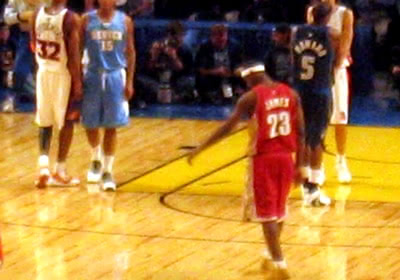
Photo Credit: Amin Eshaiker, CC BY-SA 3.0 https://creativecommons.org/licenses/by-sa/3.0, via Wikimedia Commons. Note that I compressed the image for use on this site.
This of course gives us many possible candidates. Since our goal is to use his All Star teammates to keep jumping back in time, the obvious place to look is for teammates in his earliest NBA All Star games. My initial speculation centered on Shaquille O’Neal, who was a teammate of Mr. James in his first NBA All Star appearance in 2005. Mr. O’Neal had appeared in every All Star Game since 1993 (when he started as a rookie) save for 1997 (not selected) and 1999 (no game played). Moreover, Mr. O’Neal’s All Star appearances spanned two conferences, being an Eastern Conference All Star from 1993-96 when he was a member of the Orlando Magic and a Western Conference All Star for his appearances from 1998-2004 as a member of the Los Angeles Lakers (Mr. O’Neal returned to the East in 2005 after being traded from the Lakers to the Miami Heat). While Mr. O’Neal does prove to the the correct choice for the first handoff from Mr. James under the rules I established above because (A) he gets us where we want to go as fast as we can possibly get there and (B) he is the earliest connection – 2005 – who can do so, we will discover later that there are actually several other possible All Star connections to Mr. James that who us to the same destination.
1. LeBron James to Shaquille O’Neal (2005)
(See 2005 NBA All Star Game stats.)
Mr. O’Neal was the starting center for the 1993 Eastern Conference All Star Team, which was no small feat considering that the backup center was Patrick Ewing. More significant to our survey, however, is the starting point guard on the 1993 NBA All Star Game. That was none other than the 1990 NBA Finals MVP, Isiah Thomas, who was making his 12th, and what would turn out to be final, NBA All Star appearance. Significantly, Mr. Thomas had then made the Eastern Conference All Star team in all 12 of his NBA seasons, covering the 1982-93 games, and thus eliminating any need to consider Michael Jordan (who played in the 1985 and 1987-93 All Star games) as a candidate. Similarly, none of Mr. O’Neal’s early Eastern Conference All Star game teammates played in early-to-mid 1980s Western Conference games.
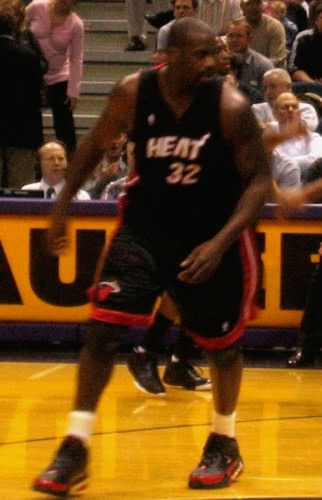
Photo Credit: The original uploader was Quadzilla99 at English Wikipedia., CC BY 2.0, via Wikimedia Commons. Image shrunk and compressed for use on NLJ.
It turns out that most of that preamble is meaningless to our survey. While it is possible to get from Mr. Thomas’s 1983 NBA All Star appearance to the 1951 NBA All Star game within six steps (spoiler), it is not possible to get there using Mr. Thomas as the connection as fast as it is to use a different connection to Mr. O’Neal.
2. Shaquille O’Neal to Karl Malone (1998)
(See 1998 NBA All Star Game stats stats.)
Mr. O’Neal played in every All Star game from for the Eastern Conference from 1993-96, but none of those are the best choice for our project. Instead, we will skip ahead to Mr. O’Neal’s first Western Conference All Star appearance in 1998, when he was a teammate of 14-time All Star Karl Malone. Mr. O’Neal and Mr. Malone played together in the 1998, 2000, 2001, and 2002 NBA All Star games (before playing together for one season with the Los Angeles Lakers in 2003-04, wherein they lost in the NBA Finals), but we will use 1998 since my rules provide we should go back as far as we can with each leap.
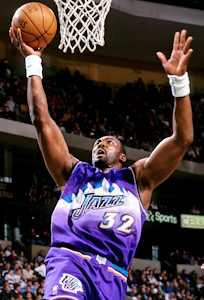
Photo credit:
Copyright by Steve Lipofsky Basketballphoto.com, CC BY 3.0, via Wikimedia Commons. Compressed from original for use on NLJ.
Mr. Malone gets the nod over Mr. Thomas, notwithstanding that we could get to 1993 by going from Mr. O’Neal to Mr. Thomas instead of 1998 with Mr. Malone, because our goal is to make a connection with a very specific NBA All Star – and Mr. Malone, unlike Mr. Thomas, can make that connection without a middleman. (Mr. Thomas’s “middleman” to Mr. Abdul-Jabbar is Malone, but Moses Malone instead of Karl Malone.)
3. Karl Malone to Kareem Abdul-Jabbar (1988)
(See 1988 NBA All Star Game stats.)
Kareem Abdul-Jabbar played in 19 All Star games and held the record for most All Star appearances until Mr. James broke it when he took the floor for the 2024 NBA All Star Game. He made his 18th and penultimate All Star appearance in 1988, wherein he shared the court with Mr. Malone. Mr. Abdul-Jabbar’s first All Star appearance was in 1970 and no other 1980s All Star comes close to taking us back that far.
4. Kareem Abdul-Jabbar to Oscar Robertson (1970)
(See 1970 NBA All Star Game stats.)
Mr. Abdul-Jabbar appeared in the NBA All Star Game as a rookie in 1970. Oscar Robertson, then of the Cincinnati Royals (the Royals eventually turned into today’s Sacramento Kings), was a starting guard on the 1970 NBA All Star team.
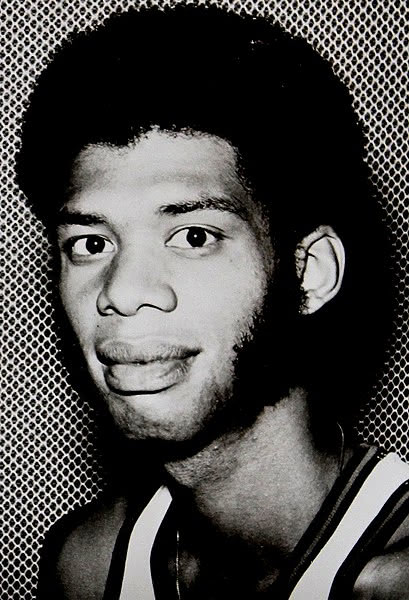
Mr. Abdul-Jabbar and Mr. Robertson would both be Western Conference All Star teammates in 1971 after Mr. Abdul-Jabbar’s Milwaukee Bucks were moved from the Eastern Conference to the West and Mr. Robertson had been traded to the Bucks, but for our purposes, 1970 is good enough. We are just one connection away from 1951. (Aside: Messrs. Abdul-Jabbar and Robertson led the Bucks to the NBA championship in 1970-71.)
5. Oscar Robertson to Bob Cousy (1963)
(See 1963 NBA All Star Game stats.)
In 1970, Oscar Robertson had appeared in the NBA All Star Game in all 10 of his NBA seasons, beginning with his rookie season in 1961. Mr. Robertson had been a member of the Cincinnati Royals in each of those 10 seasons. The Royals, like the Bucks, were not always in the same conference.
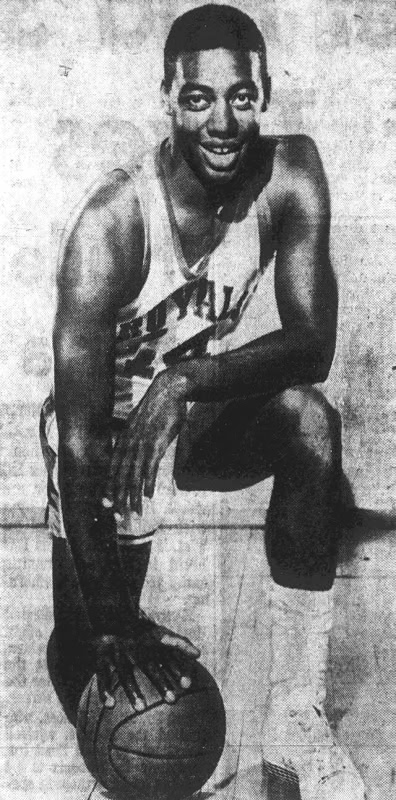
Thanks to this, Robertson was a Western Conference All Star in 1961 and 1962 and an Eastern Conference All Star in 1963-1970, all without having changed teams. We accordingly have to rely on a connection in 1963 instead of 1961 or 1962 to reach our destination. Mr. Robertson was teammates with Bob Cousy in the 1963 NBA All Star Game.
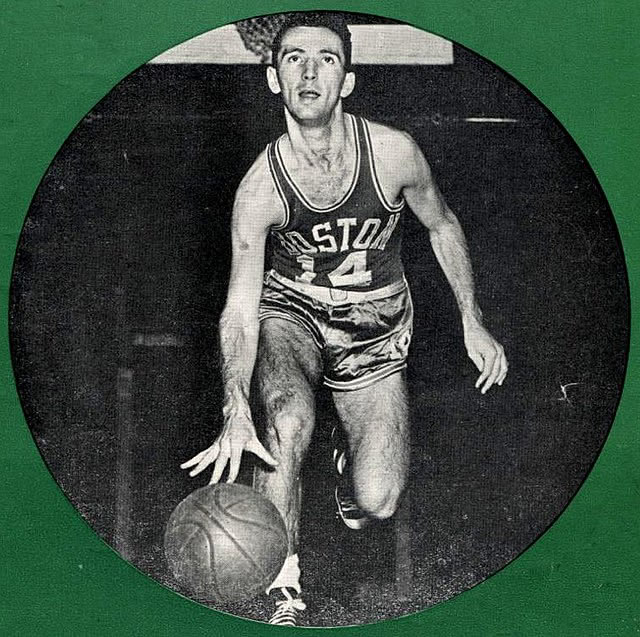
Mr. Cousy was making his last of 13 NBA All Star appearances in his first (see parenthetical below) 13 NBA seasons. If you can do the math – you will understand the significance: Mr. Cousy was one of the 24 players to have played in the inagural 1951 NBA All Star Game. We have gone from Mr. James to Mr. Cousy with just five of our allotted six connections. (Additional fun note: The best path under the rules I adopted for the survey includes the top three all time points leaders in NBA history as of this writing, Messrs. James, Abdul-Jabbar, and Karl Malone, in that order.)
(Mr. Cousy played for the Boston Celtics from 1950-51 through 1962-63 and made the NBA All Star Game in all 13 of those seasons. He would be among the select few players to have been an NBA All Star in every season for his career but for the 1969-70 season. Mr. Cousy, then the Coach of a Cincinnatti Royals team starring Oscar Robertson, briefly came out of retirement, appearing in 7 games and playing for 34 minutes that season.)
It is worth noting that there was a way to make an earlier step 5 connection from Mr. Abdul-Jabbar. In 1971, Mr. Abdul-Jabbar was a Western Conference All Star after his Milwaukee Bucks switched conferences. There, he was not only once again an All Star teammate with Mr. Robertson, but also with Wilt Chamberlain. Chamberlain, like Messrs. Abdul-Jabbar, Robertson, and Cousy, was an NBA All Star in his rookie season, that being in 1960. Chamberlain’s teammates on the 1960 Eastern Conference All Star team included both Mr. Cousy and Dolph Schayes. Schayes, like Mr. Cousy, was one of the original NBA All Stars in 1951 (Schayes’ final All Star appearance came in 1962, so he missed Oscar Robertson’s Eastern Conference All Star debut by one year). However, because my rules say we should go back as early as possible with each hop, I chose Mr. Robertson over Chamberlain as Mr. Abdul-Jabbar’s connection because we could go to 1970 instead of 1971 on that hop while still reaching 1951 with just one additional connection.
Other Paths to the Same Result
The only way to get from Mr. James to the 1951 NBA All Star game in just five hops is for there to only need to be two links between Mr. James and Mr. Abdul-Jabbar. There is no five-hop road that does not run through Mr. Abdul-Jabbar. Because this all centers (pun intended) on Mr. Abdul-Jabbar, there are a few other ways to get from Mr. James to the same place as the path I set forth above.
| ASG | LeBron James ECAS Teammate | 1-Step to Kareem Abdul-Jabbar |
|---|---|---|
| 2006 | Rasheed Wallace | Karl Malone (2000) |
| 2008 | Jason Kidd | Hakeem Olajuwon (1996) |
| 2009 | Kevin Garnett | Olajuwon (1997) |
Hakeem Olajuwon made the Western Conference NBA All Star team as a rookie in 1985, where he was a teammate with Mr. Abdul-Jabbar. His final Western Conference All Star appearance came in 1997 when Mr. O’Neal was not selected.
Because I choose the earliest All Star game for each hop when all things are equal, Mr. Olajuwon takes precedence over Mr. Malone because he can make the connection to Mr. Abdul-Jabbar three years earlier. However, Mr. Malone was a Western Conference All Star in 1996 and 97, so he would have been a qualifying connection in those years for Messrs. Kidd and Garnett. So too would John Stockton, Mr. Malone’s teammate for all 18 of his seasons with the Utah Jazz, but Mr. Stockton’s first Western Conference All Star appearance with Mr. Abdul-Jabbar came in 1989, so Mr. Malone takes precedence (Mr. Stockton made his final All Star appearance in 2000, so he would have also been a connection for Messrs. O’Neal and Wallace).
Mr. Wallace, who has featured on a couple of my articles about the 2003-04 NBA Champion Detroit Pistons, is the easiest to miss. He only played in four All Star games, with the last being as an injury replacement. His first two selections had came in 2000 and 2001 for the Western Conference when he played for the Portland Trail Blazers – which is where he was an All Star teammate of Messrs. Malone and Stockton (only 2000 for Mr. Stockton).
Both Jason Kidd and Kevin Garnett also lead to the same result. Mr. James very nearly never played on the same All Star team with Mr. Kidd. Mr. Kidd was an All Star when Mr. James was not selected in 2004. Mr. Kidd was not selected again until he made the Eastern Conference All Star team in 2007, but he missed the game with injury. 2008 was an odd case because it was known before the All Star game that Mr. Kidd was likely imminently headed to the Dallas Mavericks of the Western Conference, and the trade was agreed upon on the day of the All Star game (finalized two days later), but Mr. Kidd was a member of the Eastern Conference’s New Jersey Nets just long enough to play for the East in what would be his penultimate All Star appearance (his final appearance came in 2010 for the West). Mr. Kidd’s first All Star game came for the West in 1996 during his first stint with the Dallas Mavericks, in which he shared a locker room with Messrs. Olajuwon, Malone, and Stockton. Mr. Kidd also made the Western Conference team in 1998 and 2000-2001 with the Phoenix Suns, so he would have been a qualifying match even without the 1996 appearance since he was a teammate of Messrs. Malone and Stockton. Had Mr. James been selected to the 2004 NBA All Star game as a rookie, it would have been Mr. Kidd, instead of Mr. O’Neal, who served as the best connection under our rules since he could make a 1996 connection instead of 1998.
Mr. Garnett was traded from the Minnesota Timberwolves of the Western Conference, where he had played since 1995-96, to the East for the 2007-08 season, but he missed the 2008 NBA All Star game after being selected due to injury (he was healthy enough thereafter to lead the Celtics’ historically dominant defense to the Championship that year). He and Mr. James first played for the same All Star Team one year later in 2009. Mr. Garnett’s first All Star appearance came with the Western Conference squad in 1997, where he was not teammates with Mr. Kidd but was teammates with Messrs. Olajuwon, Malone, and Stockton.
As for the Mr. O’Neal to Mr. Isiah Thomas scenario which I briefly referenced above, that would take one additional hop to get to 1951. We could go from Mr. James to Mr. O’Neal (2005), Mr. O’Neal to Mr. Thomas (1993), and then Mr. Thomas to Moses Malone (1983). Moses Malone was a Western Conference All Star teammate of Mr. Abdul-Jabbar in 1979, so we can still get to 1951, but in six steps instead of five. Alternatively, we could have Mr. Thomas hand off to Julius “Dr. J” Erving (1983), Erving to John Havlicek (1977), Havlicek to Bill Russell (1966), and finally Russell to Paul Arizin, Bob Cousy, or Dolph Schayes (1958) (note: Earl “The Pearl” Monroe would also technically work as a handoff for Erving in 1977, having been an All Star teammate of Russell in 1969). It is worth noting that going from Mr. O’Neal to Michael Jordan (also 1993) opens the same possibilities as Mr. Thomas since Mr. Jordan was an All Star teammate of both Messrs. Erving and Malone in 1985. But this path too requires six connections instead of the five we can get from going from LeBron James to Kareem Abdul-Jabbar in two hops.
Conclusion
I did not go into my survey with decisive predictions, but I assumed off the top of my head that we could make it from Mr. James to 1951 in fewer than six hops. That turned out to be the case – with four immediate handoffs leading to paths to get to the goal in five steps. From working through the survey, I know that there are additional six-step paths, and perhaps there are some additional ones if we dig further. However, I am satisfied with my findings and I leave it to others to find some interesting scenarios that I did not come up with.
While this is a silly survey conducted just for fun, it does serve to highlight the immense longevity of Messrs. James and Abdul-Jabbar that largely thanks to their sustained success – we can link NBA All Star teammates going back 73 years in just five steps. Thanks to their being five-step connections involving Mr. James, I will venture that it will still be possible to make six-step connections to the 1951 NBA All Star Game with an active player under our rules for at least another decade, albeit the non-Kareem Abdul-Jabbar paths will be close to closed whenever Mr. James retires (Chris Paul, Kevin Durant, Derrick Rose, and Al Horford are, off the top of my head, the only other four remaining active players who have an All Star link to Messrs. O’Neal, Garnett, and/or Kidd).